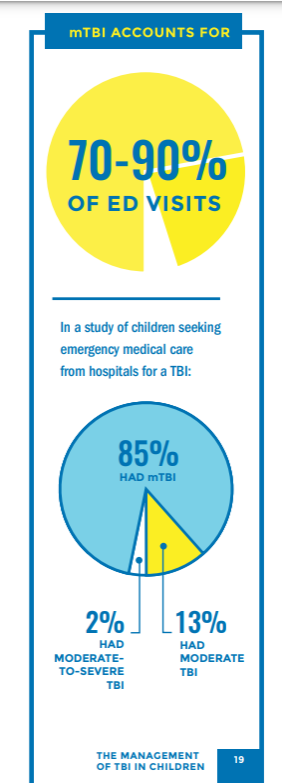Introduction
There are plenty of medical issues worldwide that impact people’s health. For this reason, various means exist, including a graphical display of the problem, to help professionals understand the main aspects. In this case, the topic of interest is TBI (traumatic brain injury).
Reason for Topic Selection
The topic was chosen because I work in the emergency room, and TBIs are frequent and can be prevented. This subject matter is broad, so it was decided to focus on a specific age group – children between 0 and 14 years old, as cases of vulnerability in this category are most persistent. Figure 1 below shows the information representing the study of children seeking emergency medical care for a TBI (Haarbauer-Krupa et al., 2018). As an emergency room professional, this topic is crucial because individuals with this kind of injury are hospitalized frequently.
Graph Summary and Analysis
For me, it is necessary to understand the statistics of TBI occasions so that the graphic assistance can be found and analyzed. It shows the overall visit rate of children with TBI to hospitals in the United States through the last decade (Haarbauer-Krupa et al., 2018). Around 85% of persons anticipated help for brain trauma, where 13% were moderate cases and 2% were moderate-to-severe ones (Haarbauer-Krupa et al., 2018). This statistic is helpful, as it indicates that the prevalence of TBI patients between the ages of 0-14 is relatively high and requires the emergency room workers to take quick and quality measures in providing necessary assistance.

Conclusion
Conclusively, the primary purpose of each emergency room worker is to reduce the risks of TBI outcomes in children and learn to distinguish the type of trauma to ensure needed services in a short period. It is impossible without appropriate preparation, which can be done through statistical analysis of the given problem. Visual charts help to understand the overall problem and find the most significant issues in TBI cases.
Reference
Haarbauer-Krupa, J., Glang, A., Kurowski, B., & Breiding, M. (2018). The management of traumatic brain injury in children: Opportunities for action. Web.